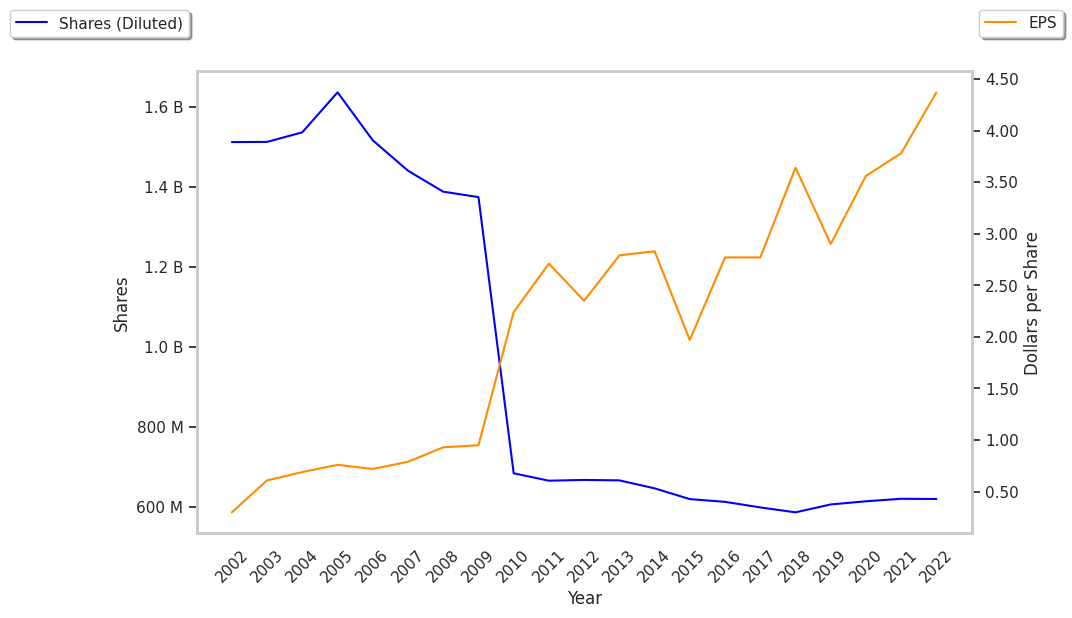Many investors turn to Benjamin Graham's so-called “Graham number” to calculate the fair price of a stock. The Graham number is √(22.5 * 5 year average earnings per share * book value per share), which for General Mills gives us a fair price of $39.94. In comparison, the stock’s market price is $65.0 per share. General Mills’s current market price is 62.7% above its Graham number, which implies that there is upside potential -- even for a conservative investors who require a significant margin of safety.
The Graham number is often used in isolation, but in fact it is only one part of a check list for choosing defensive stocks that he laid out in Chapter 14 of The Intelligent Investor. The analysis requires us to look at the following fundamentals of General Mills:
Sales Revenue Should Be No Less Than $500 million
For General Mills, average sales revenue over the last 5 years has been $35.42 Billion, so in the context of the Graham analysis the stock has impressive sales revenue. Originally the threshold was $100 million, but since the book was published in the 1970s it's necessary to adjust the figure for inflation.
Current Assets Should Be at Least Twice Current Liabilities
We calculate General Mills's current ratio by dividing its total current assets of $4.81 Billion by its total current liabilities of $7.29 Billion. Current assets refer to company assets that can be transferred into cash within one year, such as accounts receivable, inventory, and liquid financial instruments. Current liabilities, on the other hand, refer to those that will come due within one year. General Mills’s current liabilities are actually greater than its current assets, since its current ratio is only 0.7.
The Company’s Long-term Debt Should Not Exceed its Net Current Assets
This means that its ratio of debt to net current assets should be 1 or less. Since General Mills’s debt ratio is -0.7, the company has much more liabilities than current assets because its long term debt to net current asset ratio is -0.7. We calculate General Mills’s debt to net current assets ratio by dividing its total long term of debt of $11.43 Billion by its current assets minus total liabilities of $22.24 Billion.
The Stock Should Have a Positive Level of Retained Earnings Over Several Years
General Mills had good record of retained earnings with an average of $13.54 Billion. Retained earnings are the sum of the current and previous reporting periods' net asset amounts, minus all dividend payments. It's a similar metric to free cash flow, with the difference that retained earnings are accounted for on an accrual basis.
There Should Be a Record of Uninterrupted Dividend Payments Over the Last 20 Years
Shareholders of General Mills have received regular dividends since 2011. The company has returned an average dividend yield of 3.2% over the last five years.
A Minimum Increase of at Least One-third in Earnings per Share (EPS) Over the Past 10 Years
To determine General Mills's EPS growth over time, we will average out its EPS for 2008, 2009, and 2010, which were $1.85, $0.83, and $0.92 respectively. This gives us an average of $1.20 for the period of 2008 to 2010. Next, we compare this value with the average EPS reported in 2022, 2023, and 2024, which were $1.01, $1.02, and $4.31, for an average of $2.11. Now we see that General Mills's EPS growth was 75.83% during this period, which satisfies Ben Graham's requirement.
Based on the above analysis, we can conclude that General Mills satisfies some of the criteria Benjamin Graham used for identifying for an undervalued stock because it is trading above its fair value and has:
- impressive sales revenue
- not enough current assets to cover current liabilities because its current ratio is 0.66
- much more liabilities than current assets because its long term debt to net current asset ratio is -0.7
- good record of retained earnings
- a solid record of dividends
- positive EPS growth



